Operation: Railroad Model (english)
americaN: Car Cards and Waybills
- Details
- Kategorie: Operation: Railroad Model (english)
- Zuletzt aktualisiert: Freitag, 02. April 2010 07:56
- Geschrieben von Bernd Schneider + Michael Homberg
Car Cards and Waybills | |
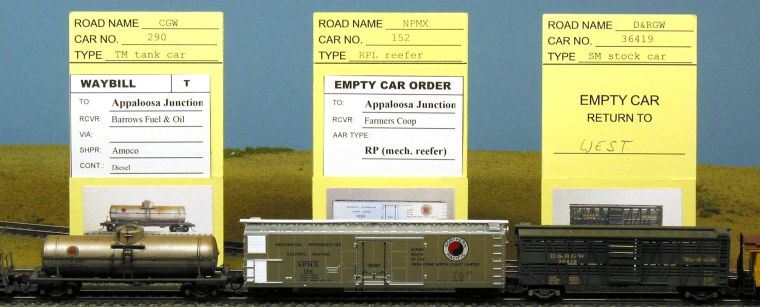
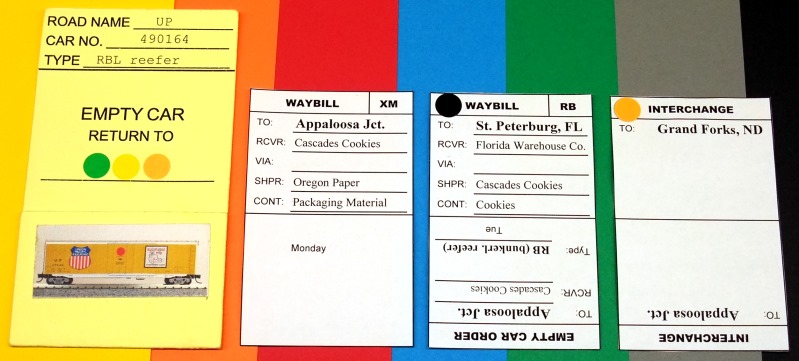
Car cards and waybills with color coding.
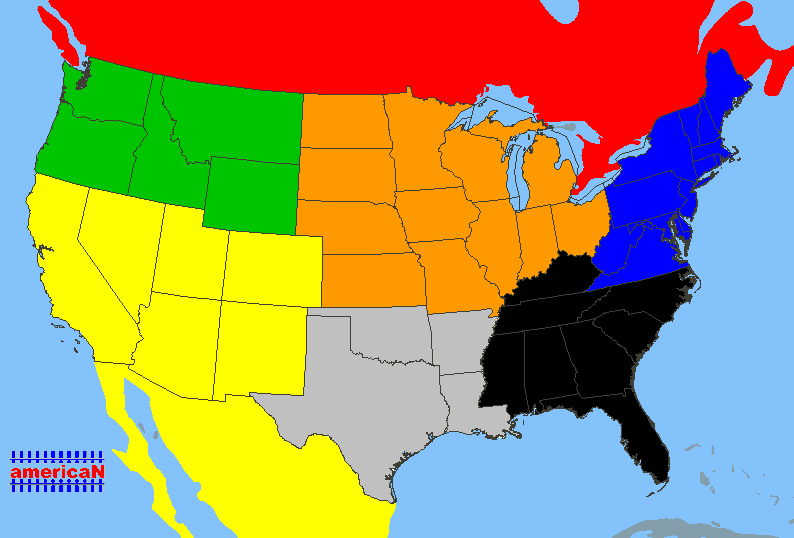
The color coding is base on the home districts for freight cars, which were effective until 1980.
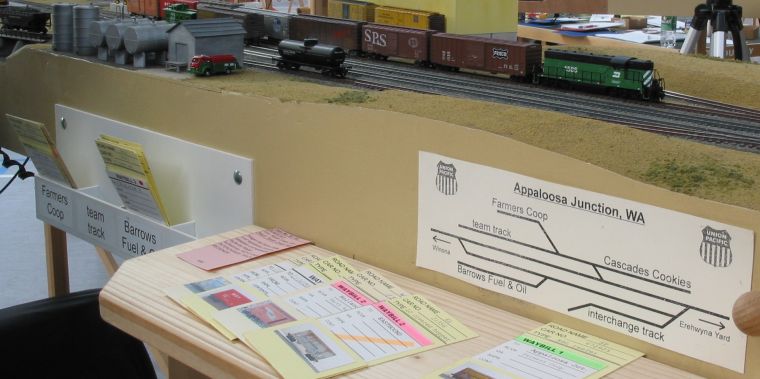
An adequate equipment to store and sort car cards is needed at each station and staging yard. This is the fact even if there is only one shipper at a siding.On the picture above you find the following:
- On the left is a storage box for car cards with four compartments: three are used for the shippers which are at the west side of the station. The fourth compartment is for “outbound”, where cars are stored which are ready to depart.
- On the right side of Appaloosa Junction (not in this picture) is a storage box compartment for “off spot”. Here all cars are stored which should be at a consignee of this station, but cannot be delivered because that spot is occupied with another car.
- Each compartment of the car card box is 7 cm high and 4 cm wide (net sizes). As a material, polystyrene plates of 2.5 mm thickness are used.
- In the foreground of the picture is the sorting board. It is very important that this is large enough to store and sort car cards, and to place other things while working at the station. If this board is missing, or is too small, car cards and other material are placed on the model landscape.
- A schematic track plan with all names of all shippers and spots helps the operators to identify the places to deliver the cars.
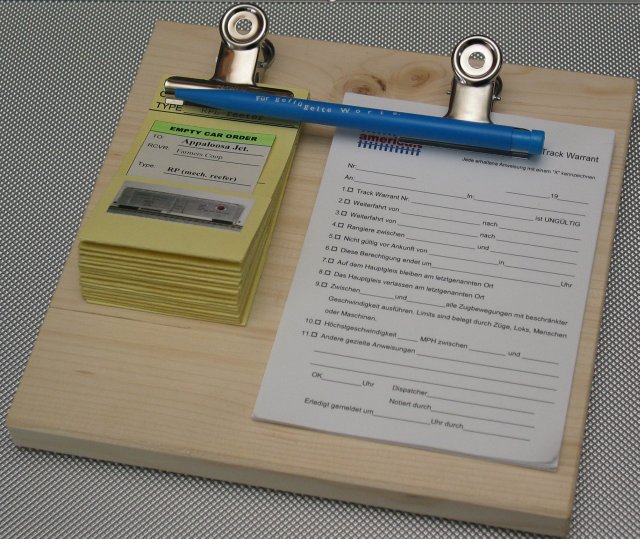
Addition 2010-03-31:
What about Waybills if you have active interchange?
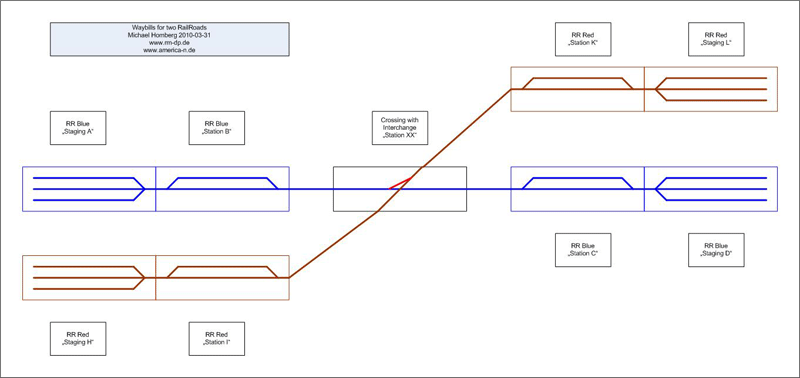
The waybill system we are using at americaN will be the same if you have two or more Railroads on your layout.
In the example above, you can have a train at "Staging H" at Railroad Red. It has cars (with waybills) for "Station I", "Station B", "Staging A", "Station C", Staging D", "Station K", "Staging L".
The cars for "I" will be set out at "I", the ones for "A", "B", "C" and "D" at Interchange "XX", the cars for "K" at "K", and the rest of cars will move on to "L".
The crew of Railroad Blue will collect the interchange cars at "XX", and reading the waybills this crew knows where to spot the cars.
How does a train crew know that a certain car should be interchanged at “XX”?
The conductor will get this information from the waybill:
- if the destination of a car is a consignee on the arrangement, this station is written on the waybill (the conductor has to know the arrangement, which will be the case as we always make a walk around at the layout before we start)
- if the end station is on staging: then this staging yard got one of our destination colors (see above), and in this case the color is marked on the waybill ("this car is going to ‘green’".
It is the task of the conductors to know the layout and its stations, including interchange concept, before moving a train.It could be possible to write the interchange information on the waybill. But:
- At americaN, the waybills are provided by the owner of a module.
- The owner prepares all waybills which are needed for his modules. The way to prepare them is to have a pack of them for every weekday.
- The waybills are re-used at and after the meetings.
- As every meeting has a different set-up, the people preparing the waybills do not know if there is any interchange (exception: dummy interchanges as in "Appaloosa Junction" or "Chatteris").
- Therefore, the interchanges cannot be printed on the waybills.
- The conductor has to prepare the work for his train.
At the meeting of americaN (in June 2010) there will be the first active shipping of freight from shippers on the layout to consignees on the layout. The idea is to make extra waybills for this purpose.
The FREMO HO Southwest-Division (which is operating with modules, too) is using the following system successfully:
- The waybills are reusable. The field “Shipper” is not filled, and therefore it can be any shipper.
- At the set up of a session, the owner of a module can give his waybill (for a car with freight) to any adequate shipper on the layout, or to any staging yard.
Source:
first part: Author: Bernd Schneider, www.america-n.de, (c) 2009, published with permission
translation and additions: Michael Homberg


